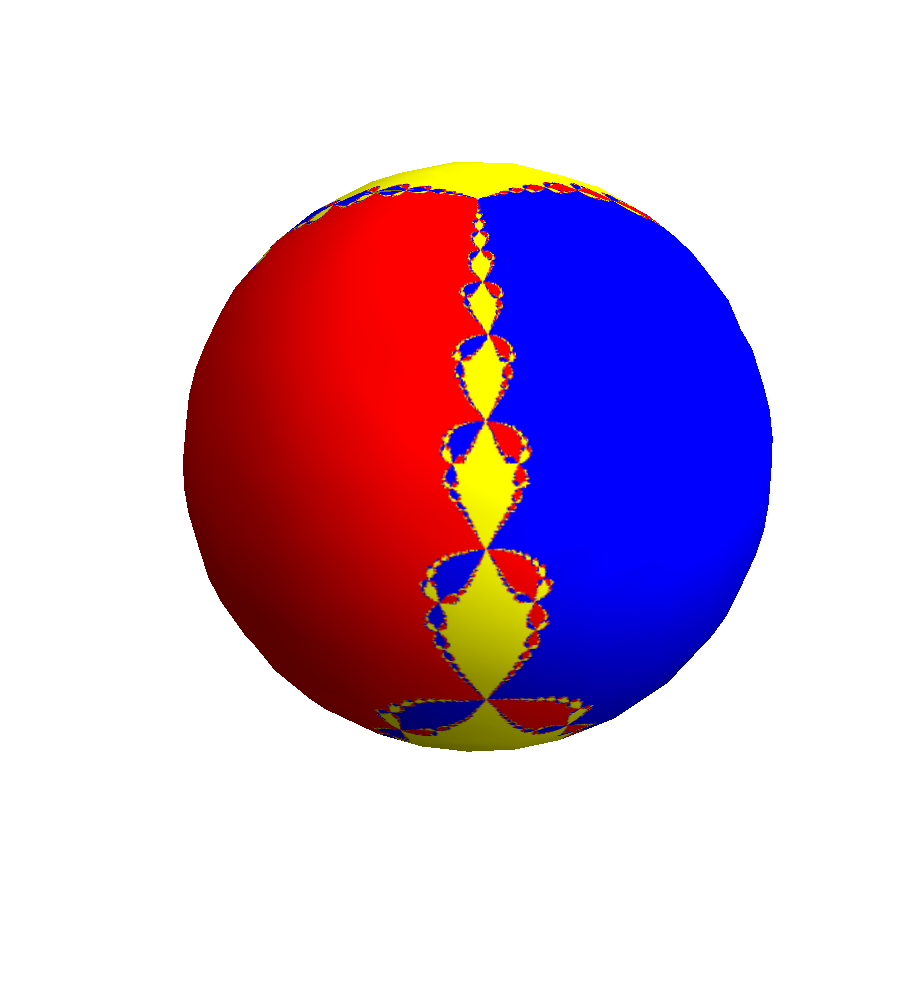Here is my modest attempt, based on the formulae for stereographic projection in this Wikipedia entry (where the north pole corresponds to the point at infinity) and using a technique similar to the one in this answerthis answer:
newtonRaphson = Compile[{{n, _Integer}, {c, _Complex}},
Arg[FixedPoint[(# - (#^n - 1)/(n #^(n - 1))) &, c, 30]]]
tex = Image[DensityPlot[
newtonRaphson[3, Cot[ϕ/2] Exp[I θ]], {θ, -π, π}, {ϕ, 0, π},
AspectRatio -> Automatic,
ColorFunction -> (Which[# < .3, Red, # > .7, Yellow, True, Blue] &),
Frame -> False, ImagePadding -> None, PlotPoints -> 400,
PlotRange -> All, PlotRangePadding -> None],
ImageResolution -> 256];
(* yes, I know that I could have used SphericalPlot3D[]... *)
ParametricPlot3D[{Sin[ϕ] Cos[θ], Sin[ϕ] Sin[θ], Cos[ϕ]}, {θ, -π, π}, {ϕ, 0, π},
Axes -> None, Boxed -> False, Lighting -> "Neutral", Mesh -> None,
PlotStyle -> Texture[tex], TextureCoordinateFunction -> ({#4, #5} &)]

